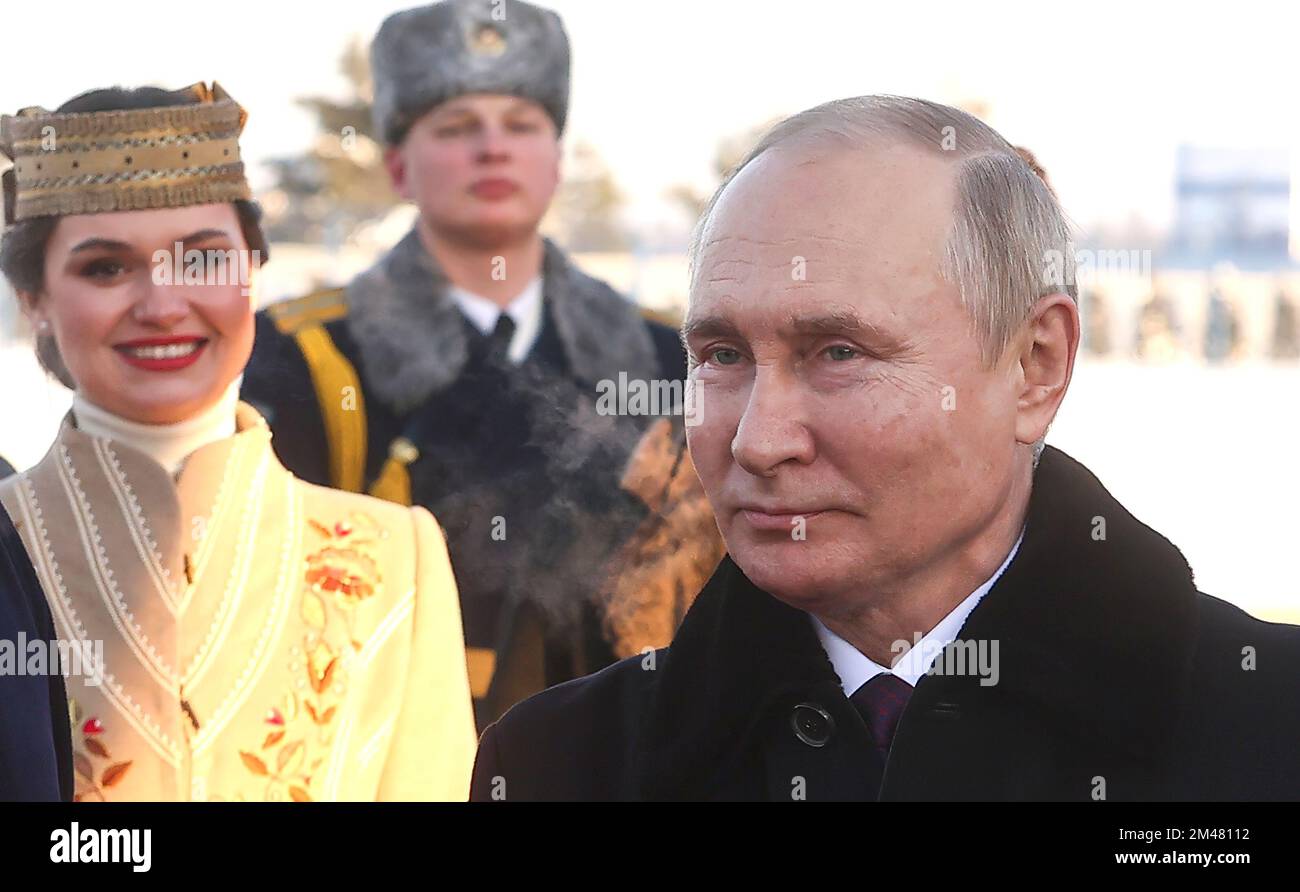Russian President Vladimir Putin arrives in Belarus to meet with President of the Republic of Belarus Alexander Lukashenko. The Kremlin stated that the two leaders will discuss key aspects of the further development of Russian-Belarusian strategic partnership and alliance with a focus on the integration within the Union State, as well as current issues on the international and regional agenda. (Photo: The Russian President's Office)

Image details
Contributor:
American Photo Archive / Alamy Stock PhotoImage ID:
2M48112File size:
18 MB (441.4 KB Compressed download)Releases:
Model - no | Property - noDo I need a release?Dimensions:
3190 x 1968 px | 27 x 16.7 cm | 10.6 x 6.6 inches | 300dpiDate taken:
19 December 2022Location:
BelarusMore information:
This image could have imperfections as it’s either historical or reportage.
On 24 February 2022, Russia invaded Ukraine in a major escalation of the Russo-Ukrainian War, which began in 2014. The invasion has likely resulted in tens of thousands of deaths on both sides. It has caused Europe's largest refugee crisis since World War II. An estimated 8 million Ukrainians were displaced within their country by late May and 7.8 million fled the country by 8 November 2022, while Russia, within five weeks of the invasion, experienced its greatest emigration since the 1917 October Revolution. Following the 2014 Ukrainian Revolution, Russia annexed Crimea, and Russian-backed paramilitaries seized part of the Donbas region of south-eastern Ukraine, which consists of Luhansk and Donetsk oblasts, sparking a regional war. In March 2021, Russia began a large military build-up along its border with Ukraine, eventually amassing up to 190, 000 troops and their equipment. Despite the build-up, denials of plans to invade or attack Ukraine were issued by various Russian government officials up to the day before the invasion. On 21 February 2022, Russia recognised the Donetsk People's Republic and the Luhansk People's Republic, two self-proclaimed breakaway quasi-states in the Donbas.The next day, the Federation Council of Russia authorised the use of military force and Russian troops entered both territories. The invasion began on the morning of 24 February 2022. when Russian president Vladimir Putin announced a "special military operation" aiming for the "demilitarisation" and "denazification" of Ukraine. In his address, Putin espoused irredentist views, challenged Ukraine's right to statehood, and falsely claimed Ukraine was governed by neo-Nazis who persecuted the ethnic Russian minority. Minutes later, Russian strikes and a large ground invasion were launched on a northern front from Belarus towards Kyiv, a north-eastern front towards Kharkiv, a southern front from Crimea.